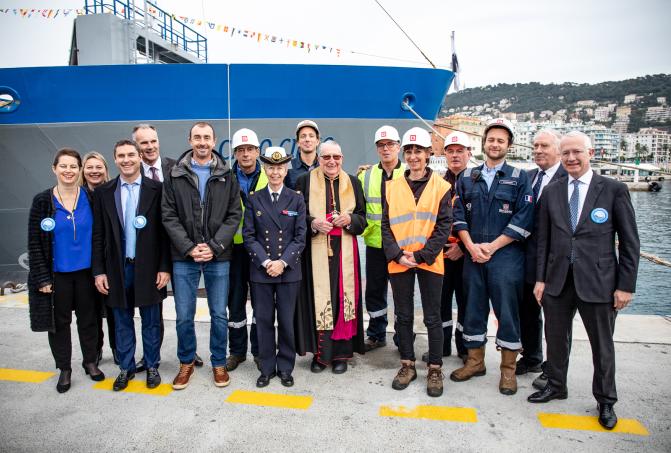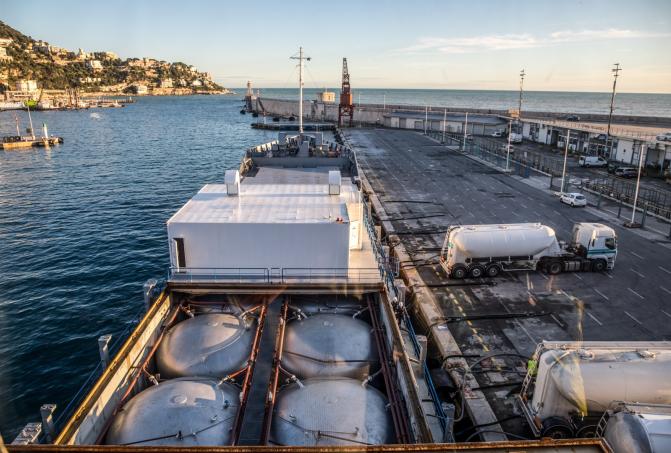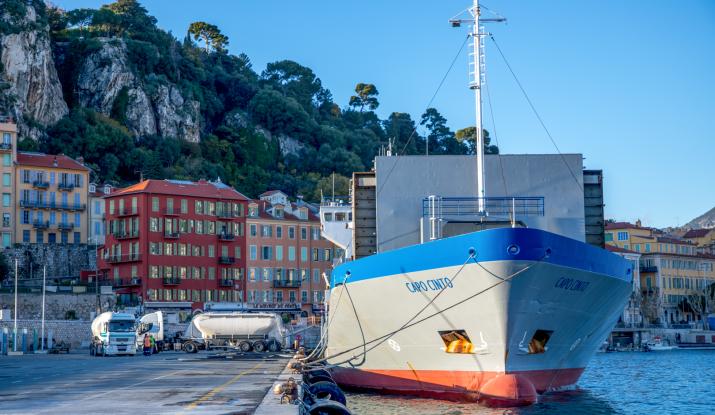Christening of Capo Cinto, Vicat’s first bulk cement carrier
On 11 December 2019, in Nice, at an event attended by Guy Sidos, chairman and CEO of the Vicat group, Vice Admiral Anne Cullerre, the vessel’s sponsor, and local authorities, the Group christened its first bulk cement carrier. As well as confirming the French company’s community focus in the southeastern part of the country, Vicat’s acquisition of its first bulk cement carrier, under a partnership with maritime logistics specialist ABCRM, is proof of enduring support for its business in Corsica, and it boosts the quality of the service afforded to local customers.

Important community focus for a strategic market
Vicat has been working in Corsica and the southeast of mainland France for 100 years. Our 23 facilities across the region (cement plant, batching plants, quarries, and depots) employ more than 300 people and generate 1,200 indirect jobs. As France’s only homegrown cement manufacturer, the acquisition of our first bulk carrier strengthens our position as a major player in the region. The French-registered Capo Cinto has two local mixed-gender crews.
The ship will carry cement manufactured by Vicat’s La Grave de Peille plant not only to the Corsican ports of Bastia, Porto Vecchio, Ajaccio, and Propiano, but also to Italy and other Mediterranean shores. The location and activities of the cement plant, which has been operating in the hills above Nice since 1923, make it a pillar of the regional market. Its proximity to the sea is a key advantage for exporting throughout the Mediterranean basin. Being located close to population centers also gives it an ideal opportunity to use local waste as alternative fuel for firing the kiln; it is thus a component in the Group’s circular-economy drive.

Technical characteristics of the Capo Cinto
Built in 1997 as a general cargo ship, and named Kurske at the time, in 2019 the vessel was converted to carry cement and rechristened Capo Cinto in reference to Monte Cinto, the highest mountain in Corsica (2,706 meters). Now, as a self-unloading pneumatic bulk carrier, she can carry a maximum cargo of close to 2,000 tons of cement in her fourteen 140-ton holds.
The Capo Cinto is precisely 90.67 meters long, and she is designed to transport cement, both in bulk and in bags, from Nice to Corsica, mostly, but also to Italy and elsewhere throughout the Mediterranean.
For this acquisition, the Vicat group partnered with ABCRM, a family-owned shipping company that shares the same values as Vicat, to form the joint venture ABCV (Agency Bulk Chartering Vicat).


